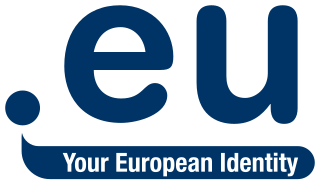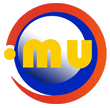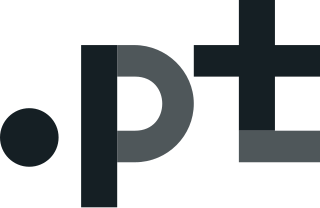The Domain Name System (DNS) is a hierarchical and distributed name service that provides a naming system for computers, services, and other resources on the Internet or other Internet Protocol (IP) networks. It associates various information with domain names assigned to each of the associated entities. Most prominently, it translates readily memorized domain names to the numerical IP addresses needed for locating and identifying computer services and devices with the underlying network protocols. The Domain Name System has been an essential component of the functionality of the Internet since 1985.

In the Internet, a domain name is a string that identifies a realm of administrative autonomy, authority or control. Domain names are often used to identify services provided through the Internet, such as websites, email services and more. Domain names are used in various networking contexts and for application-specific naming and addressing purposes. In general, a domain name identifies a network domain or an Internet Protocol (IP) resource, such as a personal computer used to access the Internet, or a server computer.
A domain name registry is a database of all domain names and the associated registrant information in the top level domains of the Domain Name System (DNS) of the Internet that enables third party entities to request administrative control of a domain name. Most registries operate on the top-level and second-level of the DNS.
In cryptography, a public key certificate, also known as a digital certificate or identity certificate, is an electronic document used to prove the validity of a public key. The certificate includes the public key and information about it, information about the identity of its owner, and the digital signature of an entity that has verified the certificate's contents. If the device examining the certificate trusts the issuer and finds the signature to be a valid signature of that issuer, then it can use the included public key to communicate securely with the certificate's subject. In email encryption, code signing, and e-signature systems, a certificate's subject is typically a person or organization. However, in Transport Layer Security (TLS) a certificate's subject is typically a computer or other device, though TLS certificates may identify organizations or individuals in addition to their core role in identifying devices. TLS, sometimes called by its older name Secure Sockets Layer (SSL), is notable for being a part of HTTPS, a protocol for securely browsing the web.

The domain name .org is a generic top-level domain (gTLD) of the Domain Name System (DNS) used on the Internet. The name is truncated from 'organization'. It was one of the original domains established in 1985, and has been operated by the Public Interest Registry since 2003. The domain was originally "intended as the miscellaneous TLD for organizations that didn't fit anywhere else." It is commonly used by non-profit organizations, open-source projects, and communities, but is an open domain that can be used by anyone. The number of registered domains in .org has increased from fewer than one million in the 1990s, to ten million in 2012, and held steady between ten and eleven million since then.

.eu is the country code top-level domain (ccTLD) for the European Union (EU). Launched on 7 December 2005, the domain is available for any person, company or organization based in the European Union. This was extended to the European Economic Area in 2014, after the regulation was incorporated into the EEA Agreement, and hence is also available for any person, company or organization based in Iceland, Liechtenstein and Norway. The TLD is administered by EURid, a consortium originally consisting of the national ccTLD registry operators of Belgium, Sweden, and Italy, joined later by the national registry operator of the Czech Republic. Trademark owners were able to submit registrations through a sunrise period, in an effort to prevent cybersquatting. Full registration started on 7 April 2006.
A domain name registrar is a company, person, or office that manages the reservation of Internet domain names.
.pl is the Internet country code top-level domain (ccTLD) for Poland, administered by NASK, the Polish research and development organization. It is one of the founding members of CENTR.
A country code top-level domain (ccTLD) is an Internet top-level domain generally used or reserved for a country, sovereign state, or dependent territory identified with a country code. All ASCII ccTLD identifiers are two letters long, and all two-letter top-level domains are ccTLDs.

.ae is the country code top-level domain (ccTLD) in the Domain Name System of the Internet for the United Arab Emirates. It is administered by .aeDA which is part of the Telecommunications and Digital Government Regulatory Authority of UAE (TDRA).
.be is the Internet country code top-level domain (ccTLD) for Belgium. As of November 2022 there are 1,746,459 registered domains.

.br is the Internet country code top-level domain (ccTLD) for Brazil. It was administered by the Brazilian Internet Steering Committee until 2005 when it started being administered by Brazilian Network Information Center. A local contact is required for any registration. Registrations of domain names with Portuguese characters are also accepted.

.cv is the country code top-level domain (ccTLD) for Cape Verde. It is managed by the National Communications Agency. It was introduced on 21 October 1996 and initially it was managed by the Instituto Superior de Engenharia e Ciências do Mar (ISECMAR), later the School of Maritime Sciences, and finally a campus of the University of Cape Verde, until its redelegation in August 2009 by the current National Communications Agency.

.uy is the Internet country code top-level domain (ccTLD) for Uruguay. Domain names can be registered at second-level or at third-level. As of 11 June 2012, second level .uy registrations are possible.

.mu is the Internet country code top-level domain (ccTLD) for Mauritius. It is administered by the Mauritius Network Information Centre and registrations are processed via accredited registrars. Some registrars market it as the .music and .museum TLD.

.np is the Internet country code top-level domain (ccTLD) for Nepal. It is administered by Mercantile Communication Pvt Ltd.

.pt is the Internet country code top-level domain (ccTLD) for Portugal and is managed by Associação DNS.PT. It has the following second-level domains:
The Public Suffix List (PSL) is a community-maintained list of rules that describe the internet domain name suffixes under which independent organisations can register their own sites. Entries on the list are referred to as effective top-level domains (eTLDs), and contain commonly used suffixes like com, net and co.uk, as well as private suffixes like appspot.com and github.io.
Domain registration is the process of acquiring a domain name from a domain name registrar.
An emoji domain is a domain name with one or more emoji in it, for example 😉.tld.










